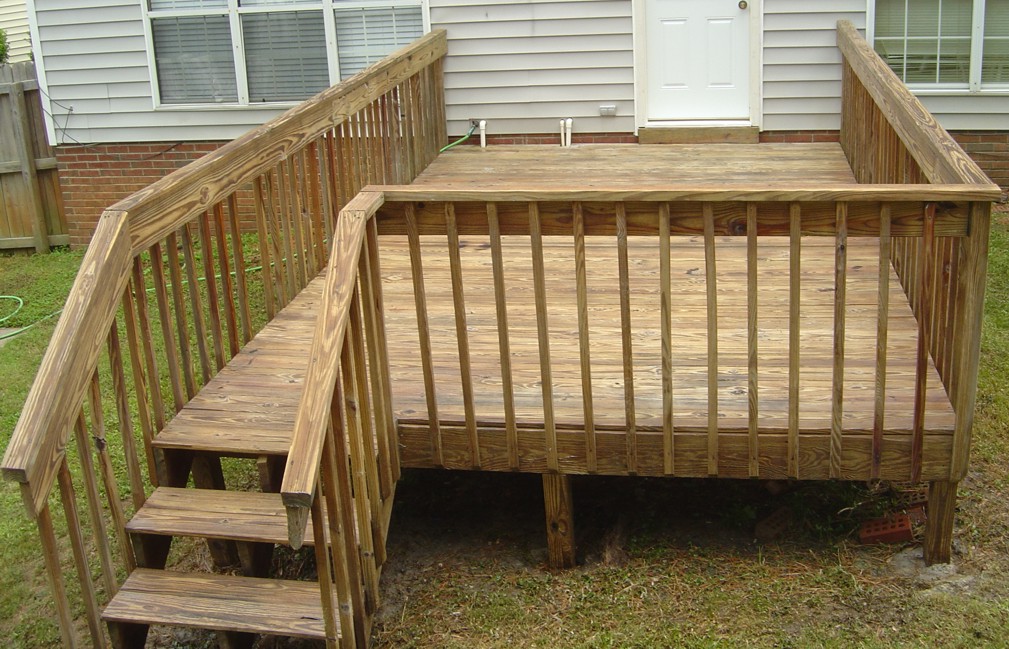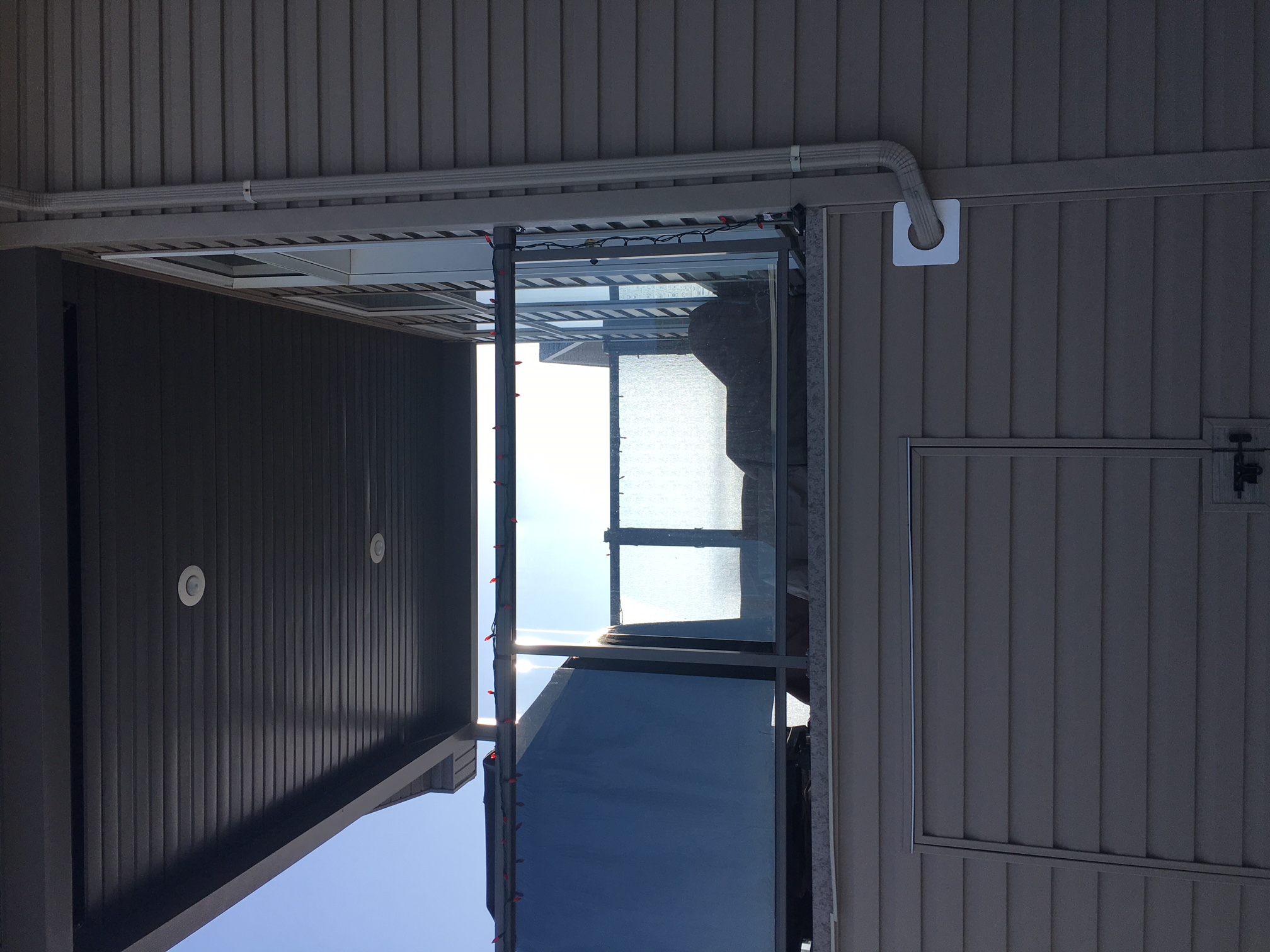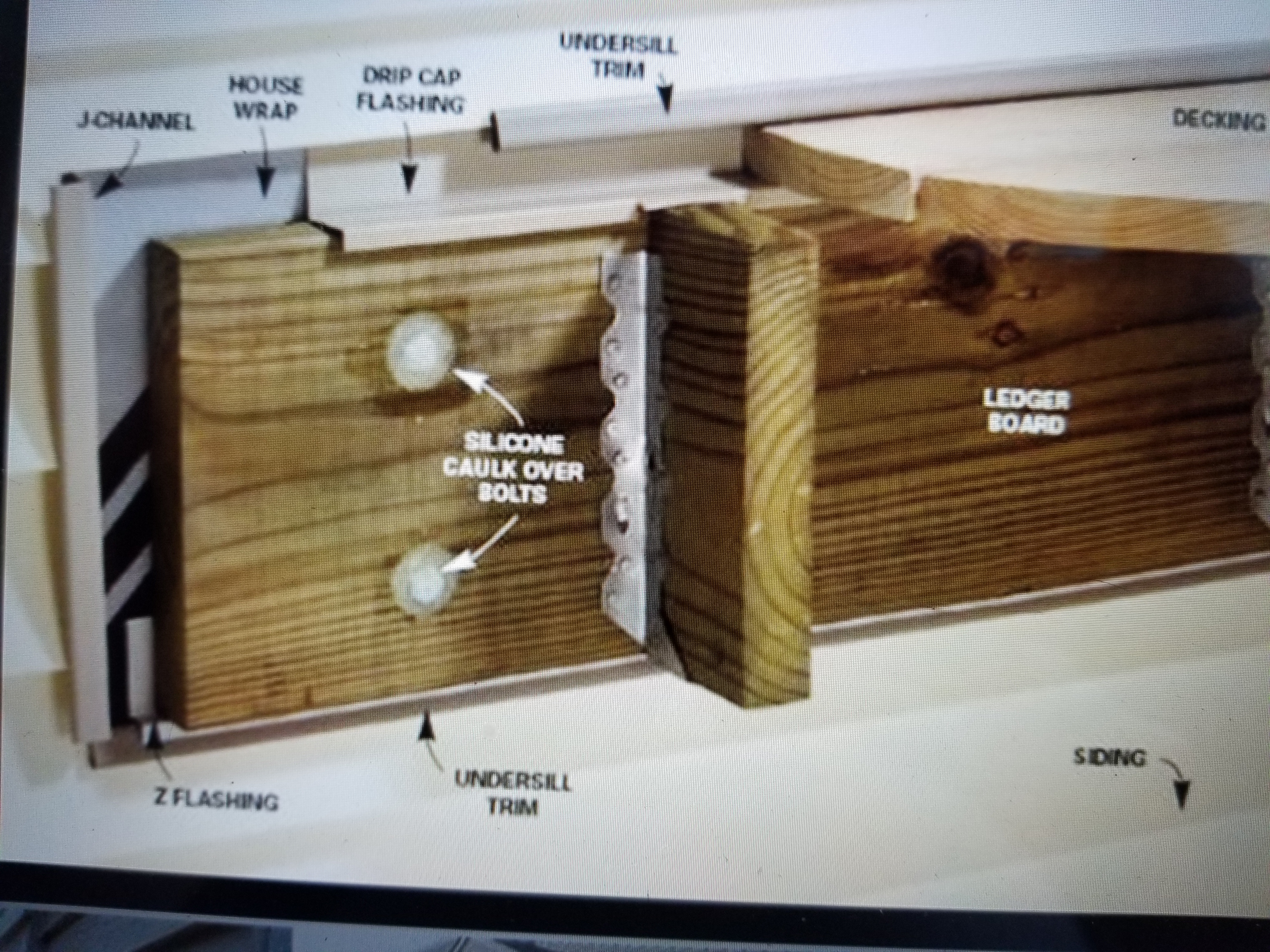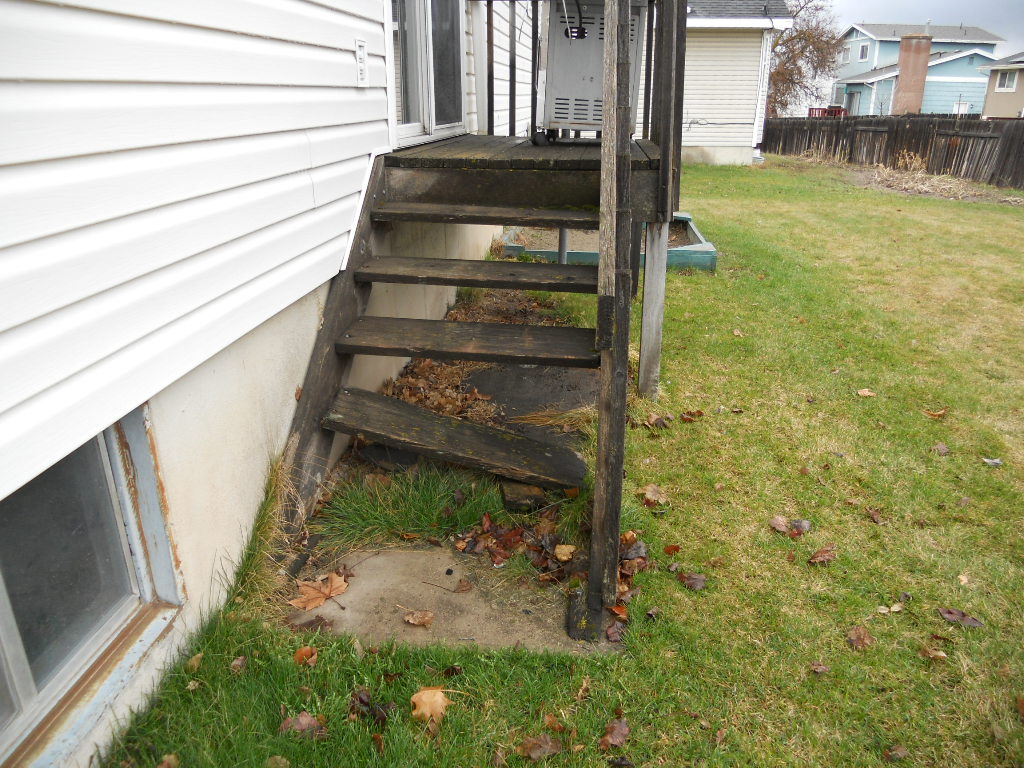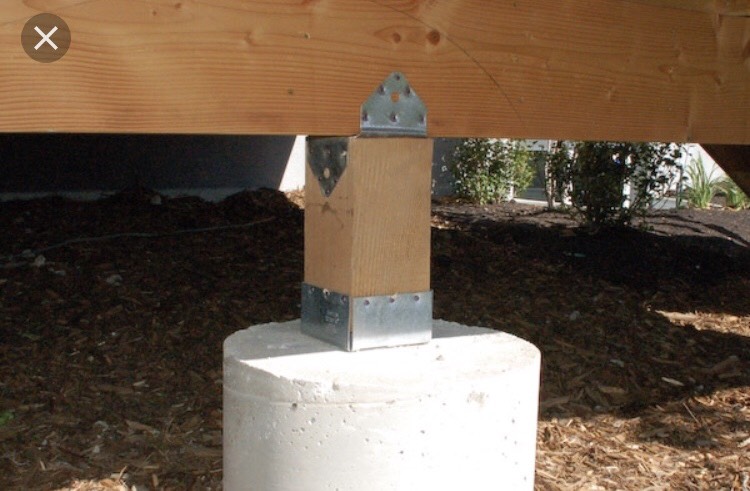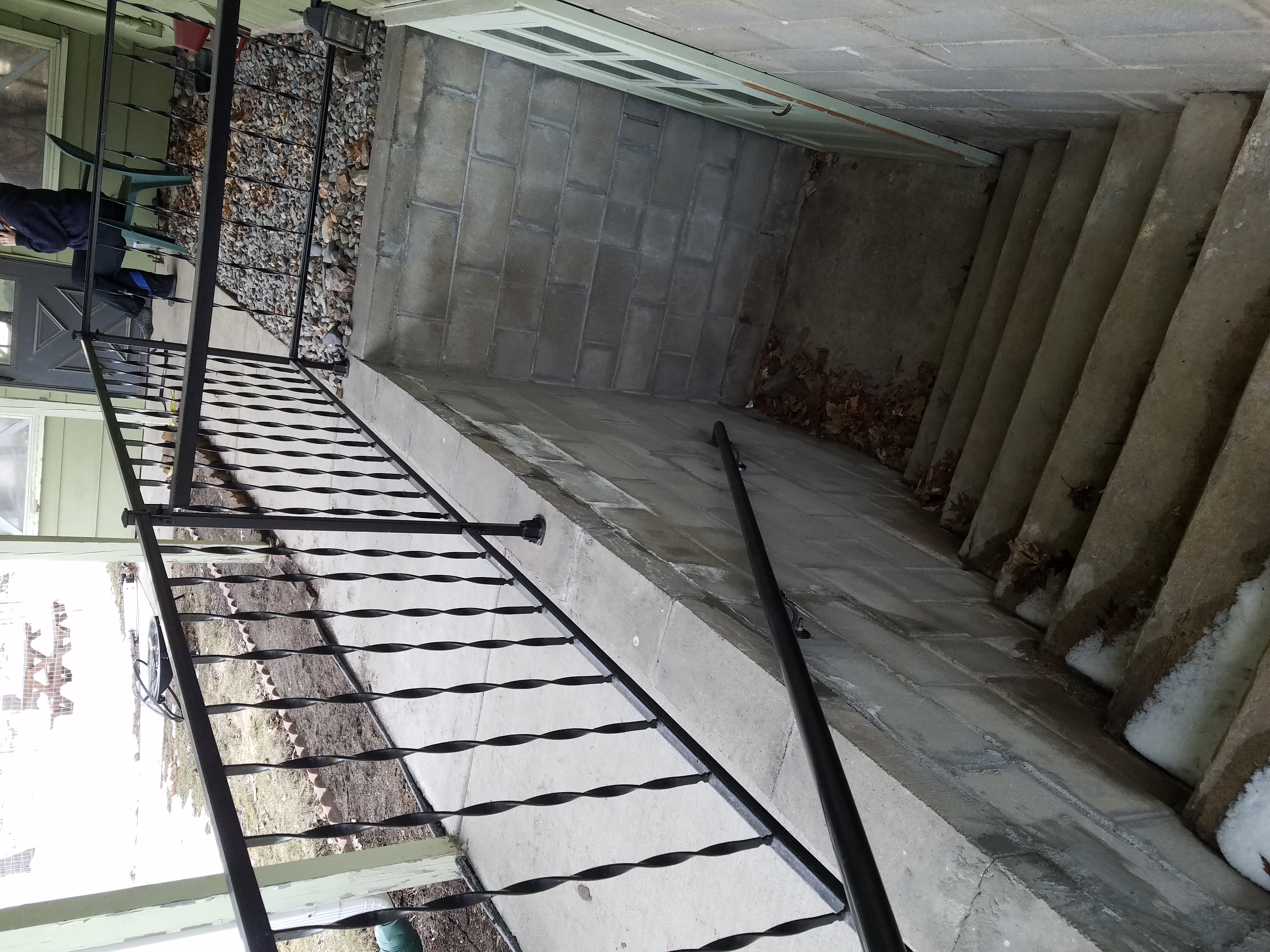This is a raised wooden deck attached to the back of the home. The deck has guardrails installed on the three of it sides with an opening in the end for a set up steps. The guard rail is is improperly supported as the the legs supporting the deck donot support the guard rail. The baluster spacing on the guardrails is improper and will let a 4 inch ball pass. The handrail on the stairs is improperly sized as it is not grip-able.
When inspecting decks an inspector should inspect the deck from the ground up. Deck columns should be checked for size and proper installation to protect from moisture damage. If the deck is attached to the structure the inspector should check that the ledger board has been properly attached to the structure. The ledger board should be properly flashed for moisture protection. The attachment of the deck joists to the ledger board should be made with approved hanger brackets or a supported by a ledger strip. Deck boards should be staggered and should lap a minimum of 4 deck joists.
This picture shows a raised level deck using glass panels as the railing system. It was noted that the glass panels have there safety glass etching stamp which would be a requirement for this type of install. It was also noted that the railing had no openings larger than the allowed maximum size for objects to pass thru, and that the height of the top rail was proper for the distance from grade of this deck.
This deck has many issues and one of them is at the top of the landing, the first step down the stairs is two inches shorter than the rest. This is a major tripping hazard and increase danger in injury because it is at the top of the steps.
The difference in risers height can be no more than 3/8 of an inch. The second step is where one would trip and fall in this situation, its like the step is pulled out from under you. Recommend having a professional modify the steps to make them equal.

Many rear decks are built or replaced annually. A large amount of these decks are built poorly by inexperienced contractors and homeowners. Decks are structures that need to be designed and built to support the loads they will be subjected to. Railing systems on decks must be built properly to guard against failure which can cause serious injuries.
An alarming 60% of all decks are deemed unsafe. What is even more alarming, this statistic also includes decks built by professional contractors. This should give home inspectors pause to be very aware of any and all decks you inspect that statistically over half the of them will likely have a defect that needs corrected and this information is vital to the potential homeowner.
Many decks are constructed brand new with unintended flaws that are or will soon be unnecessary hazards to the occupants. Most decks failed were occupied or under a heavy snow load.
In the deck inspection article it listed that 90% of all deck failures are from ledger failures and thatnthose failures are not limited tomthe experience of those installing them. This is a scarey figure to attribute to our professional contractors. Time to step up.
Due to no available deck I borrowed this pic from the internet and it shows the correct way to mount and flash a leger board for a deck. The flashings and bolt sizes are not listed but show correct installation practices.
This deck I inspected a few moths ago has a few problems. It’s not protected against the elements, It needs a graspable handrail, the stairs are an unmitigated disaster, and there are no posts supporting the hand rail(only balusters). This deck is definitely unsafe.
The image at https://www.nachi.org/gallery/?level=picture&id=961 shows us a graphic of beam rotation. This can not only cause damage to deck materials but in the case of multiple levels of decks this can cause structural damage to the home because of the deck pulling away from the home while attached. Furthermore it could cause significant injury or death to occupants.
This is a picture of a deck post that is properly secured to a footing with metal brackets. When a post is not properly secured to the footing, it can shift and the deck could collapse. This is a safety hazard.
I researched the article on deck receptacles. In 2008 the NEC changed the code that every deck should have a receptacle if it is bigger then 20 sqft. The reason being that if there is no receptacle close most people will use a extension cord to run a appliance. When using a extension cord can be a trip hazard or worse cause a house fire.
when checking deck I will start from the bottom and check for proper ledger board connection. I also want to make sure proper spacing to allow water to flow. in this deck I would like to see handrails even though it is not required with the amount of risers.

How to Create Home Inspection Website essay:
When creating a website the site should have only one purpose and that is to cause visitors to contact you to hire you. The homepage of your website has a primary purpose and that is to sell your service. The important feature of the homepage are your company logo, a tagline, “Wecome” signpost, border links and How to contact: your phone number.
so reading the article on deck receptacles…so homes built after 2008 are required to have a receptacle on the deck because of issues with extension chords causing fires. I’m not sure if I would mention the reasoning to the client because they might take it upon themselves to just say “I just wont use an extension chord” and not follow proper practice.
Image credit: google/www.amastershands.com
Image downloaded, as I did not have immediate access to a deck inspect.
This image shows significant decay in the base of the deck support post, with the trim removed. It also reveals that there is no clear attachment of the post, to its footing. The post should be replaced bu a qualified contractor. And the new post should be properly secured to the footing to prevent movement.

the article: Deck Receptacles, describes the changes in the NEC from 2005 to 2008. The new NEC requires that all dwellings must have GFCI protected receptacles at the front, and back of the house, not exceeding 6’ 6" in height from grade. Also these receptacles shoul be protected by outdoor rated “while in use” covers.
All edcks greater than 20 square ft. require a receptacle at the deck perimeter. This requirement is to reduce the use of extension cords, which can lead to fire, and tripping hazards.
Guardrail inspection.
The blasters are 5 1/2 apart. code is 4 in in between the balusters this would be considered a safety issue. Where the guard attaches to the house is loose. my recommendation is have a professional railing installer evaluate the safety of this guard.
Guardrail inspection.
The blasters are 5 1/2 apart. code is 4 in in between the balusters this would be considered a safety issue. Where the guard attaches to the house is loose. my recommendation is have a professional railing installer evaluate the safety of this guard.
I read an article on deck receptacles. As of the 2008 IRC, decks, balconies, and patios (20 square feet or bigger) accessible from inside the house are required to have 1 outdoor receptacle installed. This requirement can be met with the required receptacle at the rear of the house if at the right location. The article indicates an inspector should not call out the absence of outdoor receptacle for houses built before the code requirements.
